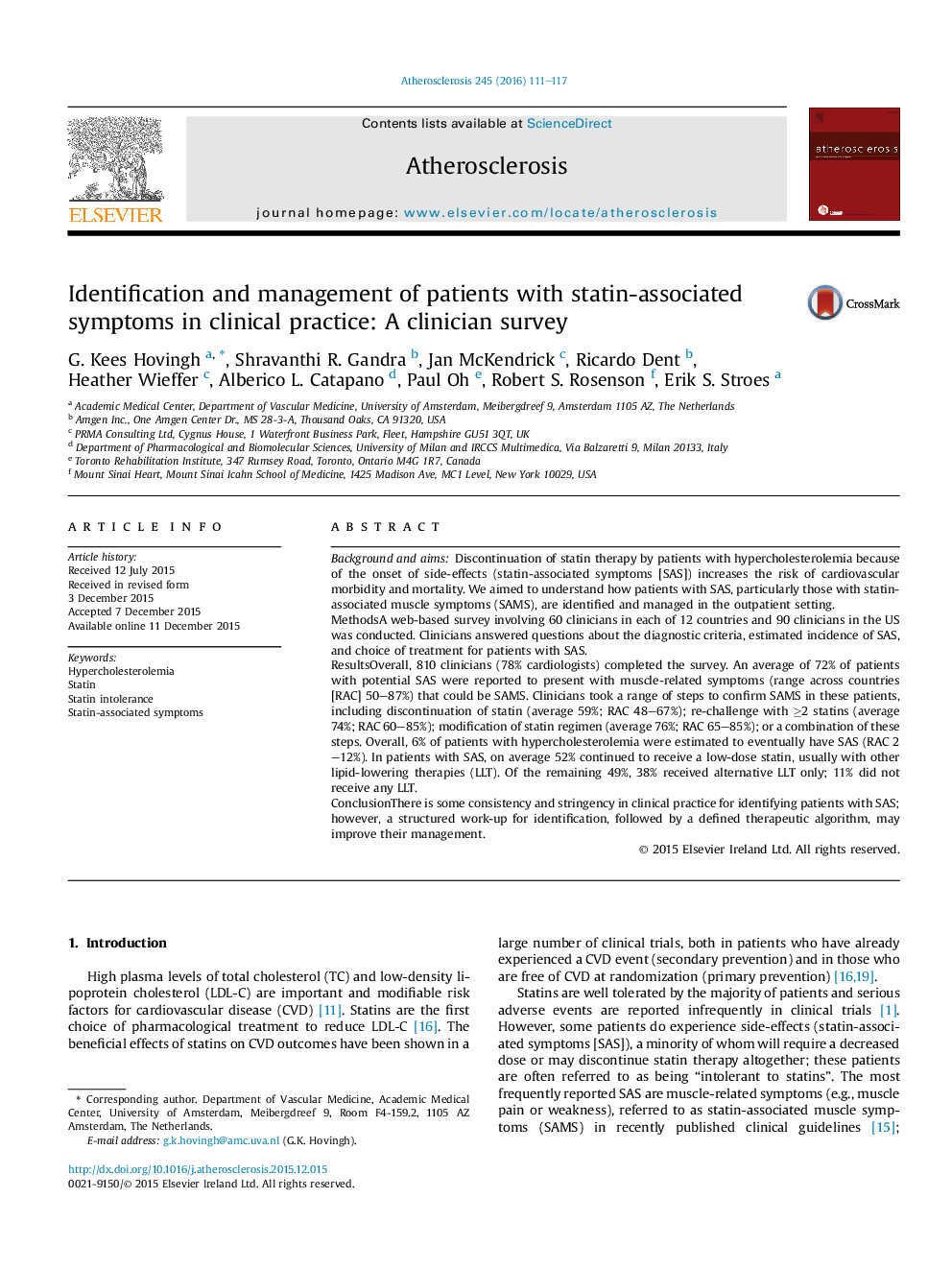| Article ID | Journal | Published Year | Pages | File Type |
|---|---|---|---|---|
| 5943563 | Atherosclerosis | 2016 | 7 Pages |
â¢We surveyed clinicians in 13 countries who treat patients with hypercholesterolemia.â¢We asked how they identify and manage patients with potential statin intolerance.â¢Most patients were reported to present with muscle-related symptoms (called SAMs).â¢Clinicians took a range of steps to confirm SAMS in these patients.â¢Identifying gaps in current practice may help future management of these patients.
Background and aimsDiscontinuation of statin therapy by patients with hypercholesterolemia because of the onset of side-effects (statin-associated symptoms [SAS]) increases the risk of cardiovascular morbidity and mortality. We aimed to understand how patients with SAS, particularly those with statin-associated muscle symptoms (SAMS), are identified and managed in the outpatient setting.MethodsA web-based survey involving 60 clinicians in each of 12 countries and 90 clinicians in the US was conducted. Clinicians answered questions about the diagnostic criteria, estimated incidence of SAS, and choice of treatment for patients with SAS.ResultsOverall, 810 clinicians (78% cardiologists) completed the survey. An average of 72% of patients with potential SAS were reported to present with muscle-related symptoms (range across countries [RAC] 50-87%) that could be SAMS. Clinicians took a range of steps to confirm SAMS in these patients, including discontinuation of statin (average 59%; RAC 48-67%); re-challenge with â¥2 statins (average 74%; RAC 60-85%); modification of statin regimen (average 76%; RAC 65-85%); or a combination of these steps. Overall, 6% of patients with hypercholesterolemia were estimated to eventually have SAS (RAC 2-12%). In patients with SAS, on average 52% continued to receive a low-dose statin, usually with other lipid-lowering therapies (LLT). Of the remaining 49%, 38% received alternative LLT only; 11% did not receive any LLT.ConclusionThere is some consistency and stringency in clinical practice for identifying patients with SAS; however, a structured work-up for identification, followed by a defined therapeutic algorithm, may improve their management.
